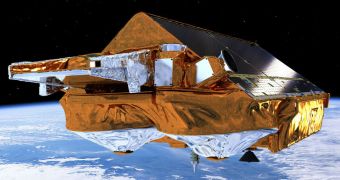At an exhibition designed to emphasize a common interest between Greenland and the Netherlands in understanding how global warming is changing the Arctic, participants heard more about the tremendous contribution that the European Space Agency (ESA) CryoSat mission is bringing to this field of research.
The Roots2Share exhibition was opened by HRH the Prince of Orange on October 13, at the Museon, in The Hague. Changing ice covers will affect both nations, so it's only natural that they share a common concern about the Arctic.
CryoSat is arguably the most advanced ice-measuring satellite in orbit today. It has the ability to create outstanding maps of ice and snow thickness at and around the North Pole. This allows authorities and researchers to remain constantly up-to-date with the way the situation changes at this critical location.
These data also help Greenland prepare itself for a future in which the ice shelves it came to rely on will be gone. The country is mostly covered in ice, a reserve of freshwater that is the third-largest in the world, after those making up the Arctic and on Antarctica.

 14 DAY TRIAL //
14 DAY TRIAL //